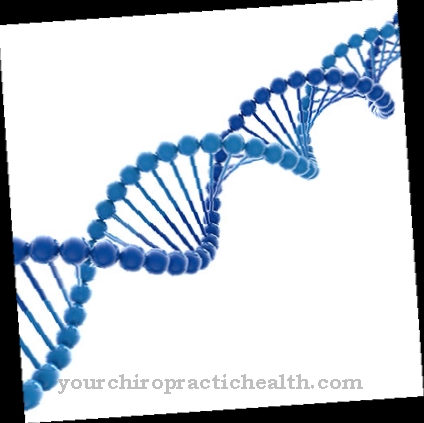In which Anterior spinal artery syndrome it is a disease that is triggered by a reduction in blood flow in what is known as the anterior spinal artery. As a result of this reduced blood flow, a typical symptom develops, which is collectively referred to as the anterior spinal artery syndrome. Basically, the anterior spinal artery syndrome is a disease that only a few people develop.
Anterior spinal artery syndrome

© Reing - stock.adobe.com
The anterior spinal artery syndrome is also abbreviated by some medical professionals Anterior spinal syndrome called. Characteristic for the disease is a disturbance of the blood flow in a certain artery, the so-called arteria spinalis anterior.
The disease develops acutely in the majority of cases. However, a subacute course is also possible. The anterior spinal artery syndrome usually develops without any prior signs. The disease is generally relatively rare.
causes
The causes of the manifestation of the anterior spinal artery syndrome are diverse and numerous. In some patients, microangiopathy leads to the disease, which mainly results from diabetes mellitus. Vasculitis is also a potential cause of the anterior spinal artery syndrome.
Finally, what is known as an AV fistula may cause the typical symptoms to develop. In addition, in some cases, the anterior spinal artery syndrome is due to damage to the aorta. An aneurysm in the course of the aorta, for example, is responsible for this. In addition, the anterior spinal artery syndrome sometimes develops following surgical interventions.
Mechanical crushing of the anterior spinal artery is also a danger. A herniated disc may compress the artery. Tumors have a similar effect, taking up more space and displacing the surrounding tissue. As a result of the reduced blood supply to the affected artery, damage occurs to the lateral and anterior cords in the medulla of the back.
Symptoms, ailments & signs
The affected patient suffers from various complaints as a result of the anterior spinal artery syndrome. Paraparesis usually develops as part of the disease. In addition, the rectum and bladder are usually impaired in their functioning. In addition, many sick people suffer from dissociated sensitivity disorders.
The perception of pain and different temperatures does not work as usual in most cases. Touches, on the other hand, are usually perceived and assigned without any problems. The anterior spinal artery syndrome often causes pain and leads to ribbon-like paresthesia.
Most of the patients suffering from the anterior spinal artery syndrome suffer from acute symptoms. The syndrome often begins with what is known as spinal shock. This condition lasts for a few weeks to several months. The shock is accompanied by paraparesis, which is usually below the damaged area.
Diagnosis & course
The diagnosis of the anterior spinal artery syndrome is made with the aid of various examination methods. At the beginning of the diagnosis, the patient participates in the anamnesis that the doctor carries out with him. As part of this conversation, the sick patient explains his or her individual symptoms. He also goes into previous illnesses and describes his lifestyle.
The family history plays a subordinate role, but must also be taken into account. Thereafter, the attending physician applies a selection of clinical examinations. Imaging methods are of great importance here. CT or MRI scans are often done with respect to anterior spinal artery syndrome. In some cases, an angiography is also done.
This is especially true for patients suspected of having an AV fistula. The imaging procedures usually make the disturbances of the blood flow in the artery clearly visible. In this way the disease can be diagnosed with relative certainty.The CT examination is particularly used to detect potential tumors or herniated discs.
In connection with the diagnosis, the doctor also performs a differential diagnosis to rule out other diseases with similar symptoms. Here the doctor usually checks whether there is multiple sclerosis, myelitis or the so-called Leriche syndrome. The disease must also be differentiated from funicular myelosis and mantle edge syndrome, because these diseases cause similar symptoms in many cases.
Complications
The anterior spinal artery syndrome is rare. This is a reduction in blood flow that occurs in the anterior spinal artery. As a rule, this happens spontaneously without further physical notice. At times there is an unnoticed disease or inflammation of the small blood vessels, often in combination with diabetes mellitus.
On the other hand, arteriovenous fistula, a crushing of the spine due to a fall or accident, a tumor and a herniated disc are more noticeable. An aneurysm that forms directly on the aorta can also lead to the onset of the syndrome. In some cases, the anterior spinal artery syndrome arises as a complication of an operation.
Depending on the development of the syndrome, the process can be extremely complicated for those affected. Due to the reduced blood supply to the spinal cord aorta, this can be permanently damaged. There are irreversible sensitivity disorders, lifelong reduced bladder and rectal function and, in the worst case, incomplete bilateral paralysis.
Even with early treatment of symptoms, the patient needs several months of convalescence. If necessary, anticoagulants and corticosteroids are prescribed and a urinary catheter is placed. The drugs can cause side effects as a further complication. Ergonomic, physiotherapeutic and psychotherapeutic measures provide holistic support for those affected. If the spinal cord aorta has been crushed as a result of an accident or if there is a tumor, surgical interventions must be considered.
When should you go to the doctor?
In the case of anterior spinal artery syndrome, a doctor should be consulted if the symptoms and symptoms of this syndrome occur. This means that further complications and complaints can be avoided directly if early treatment is initiated. As a rule, a doctor must be consulted if the person concerned suffers from sensitivity disorders or suddenly from paralysis. These can affect different regions of the body.
Furthermore, complaints of the bladder are a typical symptom of the anterior spinal artery syndrome and must be examined by a doctor. It is not uncommon for the perception of pain to be impaired by the anterior spinal artery syndrome. Therefore, if this complaint or temperature is incorrectly perceived, medical treatment must also be carried out. In the case of acute and serious complaints, the person affected can also go to a hospital directly.
Usually, anterior spinal artery syndrome can be diagnosed by a general practitioner. The treatment of this syndrome is ultimately carried out by various specialists. As a rule, most symptoms of the anterior spinal artery syndrome can be successfully limited.
Doctors & therapists in your area
Treatment & Therapy
The therapy of the anterior spinal artery syndrome starts at different points. First, prophylactic measures are taken with regard to thrombosis. A urinary catheter is also required for some of the patients. People suffering from the anterior spinal artery syndrome often receive occupational or physiotherapy as support.
If the anterior spinal artery syndrome is the result of a primary underlying disease, coordinated treatment measures are necessary. The prognosis of the anterior spinal artery syndrome does not look very positive in many cases. Because the medulla of the back is only able to withstand ischemia for a short time.
Other complaints such as disorders of the function of the bladder, rectum and sensitivity are in many cases no longer reversible. Here, only symptomatic therapeutic approaches help to alleviate the symptoms for the individual. If the anterior spinal artery is locally squeezed, surgical interventions are used immediately, for example in the case of tumors or herniated discs.
To prevent thrombosis, patients are usually given the active ingredient heparin. Corticosteroids reduce inflammatory processes. Measures to prevent pressure ulcers are also required as the risk of this complication is increased as part of the anterior spinal artery syndrome.
Outlook & forecast
The prognosis of anterior spinal artery syndrome is individual and depends on various factors. The most unfavorable prospect of a cure is if the circulatory disorder is discovered very late or if bleeding is already occurring. In these cases, various complaints have arisen, which cause permanent impairment of various physical functions.
If the bladder or bowel function has been permanently disturbed, irreversible damage is usually present. A contusion of the spinal cord is also to be classified as unfavorable. Depending on the strength of the squeezed area, it can have lifelong consequences.
The aim of the therapeutic measures is to alleviate existing symptoms. However, a cure is not possible. Slight damage to the area and immediate intensive medical treatment increases the likelihood of relief from symptoms.
Another unfavorable course is given by a tumor. The prognosis of the anterior spinal artery syndrome increases with early diagnosis and treatment of the circulatory disorder. If the circulatory disorder is detected at a very early stage, there is a good chance of recovery.
If it develops due to an acute situation, such as an accident or a fall, the chances of recovery decrease. The circulatory disorder increases the risk of thrombosis. With early treatment, this secondary disease can be treated well with today's options. However, there is still a risk of dying from a thrombus.
prevention
The measures taken to prevent anterior spinal artery syndrome are specifically geared towards the potential causes that may trigger the disease.
Aftercare
In the case of the anterior spinal artery syndrome, the patient has only very limited options for follow-up care. The person affected is primarily dependent on direct medical treatment by a doctor, as this disease cannot heal itself. An early diagnosis also has a positive effect on the further course of the disease.
Due to the anterior spinal artery syndrome, those affected are also dependent on various physiotherapies. In many cases, the exercises from these therapies can also be performed in your own home, which can also accelerate healing. When taking medication, it should be noted that the affected person should always follow the doctor's instructions.
If anything is unclear, you should always consult a doctor. Furthermore, a healthy lifestyle with a healthy diet generally has a positive effect on the course of the anterior spinal artery syndrome and can limit further complications.
The support of the person affected by one's own family or friends is also very important in order to limit psychological complaints or moods. Contact with other sufferers of the syndrome can be useful, as this can lead to an exchange of information.
You can do that yourself
Often the symptoms of the rarely occurring anterior spinal artery syndrome set in without warning. The diagnosis of a spinal cord infarction with all the symptoms that result from it initially triggers horror and bewilderment in most of those affected. However, even patients who are threatened with reduced blood flow to the anterior spinal artery as a foreseeable complication of an operation respond with shock when they are actually confronted with partial or complete paraplegia and the prospect of a life in a wheelchair.
In this situation it is very important that the patient does not lose his courage to face life. He needs motivation, a sense of achievement and effective pain therapy in order not to fall into depression. With a nerve and muscle stimulator that works with electrical stimulation, neuropathic pain can be relieved independently of medical measures.
In addition to pain therapy and medically sensible physiotherapy, gentle strength training is recommended for those affected as soon as their condition allows. With increasing strength, the training program can be made tighter. Cycling movements and exercises in the standing device when strapped on help build muscle and improve coordination and the disturbed sense of balance.
The exercises create nerve stimuli that support the restoration of as many body functions as possible. Every encouraging result builds new confidence. Objectives that are achievable, such as wheelchair sports and exchanges or joint activities with other affected persons, also help.

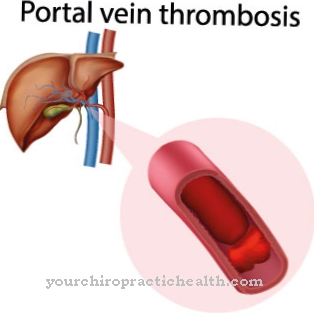
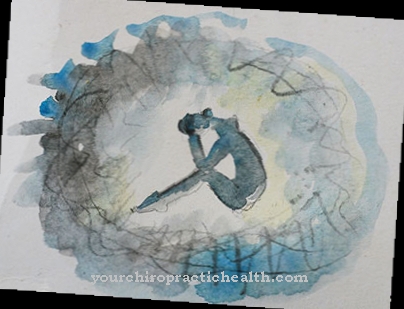
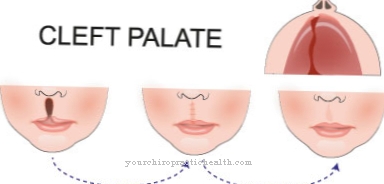
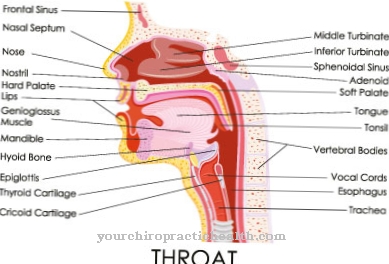
.jpg)
